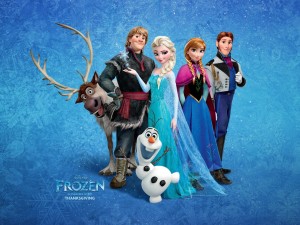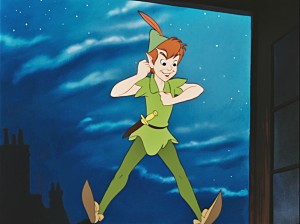Raised and Shaped by Entertainment
We’ve all heard Peter Pan’s motto, “Never grow up,” and honestly, it’s hard to disagree! When you’re a child, there’s not a care in the world except that your Barbie’s shoes don’t match or your brother stole your Transformer. There are bits and pieces of our childhood that follow us throughout the rest of our lives; memories that are too precious to forget. Throughout childhood, favorite toys, TV shows, and movies leave permanent imprints on the way children learn and behave. The toy industry has transformed as the years progress, and the entertainment supplied for these kids has perhaps strayed from the positive influences it used to display.
Toys create a world of imagination for children across the country. The same toys are used by children around the world, but the ways in which they are remembered are what define memories. When asked of her favorite childhood toy, Lacey Barkalow (10) said, “Probably my American Girl Doll because it was the one thing I was told to keep nice, so I treated her with care. My best friend and I played with them all day, every day.” According to the American Girl Doll Company, “American Girl’s mission is to celebrate girls. We embrace who they are today and look forward to who they will become tomorrow.” Each doll has a history and characteristics that are relatable to every real American girl. For example, the Josefina doll represents
Hispanic culture during the 1800s while Kit Kittredge is the typical American girl in the 30s. Also, the American Girl allows you to create your own modern day girl to represent who you are. This company teaches the right lesson to kids in having individuality rather than fitting within the expectations of society.
Unfortunately, other companies don’t always highlight this value; companies like Barbie and Bratz dolls express shallow values to children like the importance of appearance over modesty. For example, the proportions of Barbie can negatively influence children into thinking they need to be skinnier in order to be beautiful. Nikolay Lamm, of MyDeals.com says, “If normal Barbie can be made, I feel she’ll have a more positive influence on girls than Barbie in its current form.
Normal Barbie shows that you are beautiful, just the way you are.” Since the time when our parents were kids, toys have developed more mature qualities that could arguably be inappropriate to the age group they target. Some may question how the toys are influencing the development of kids’ moral values.
The toy industry for girls is not the only industry that has significantly changed over the years; unlike the change in morality for girls, some entertainment for boys, such as video games, has desensitized boys to be comfortable with violence. As the popularity of video games for boys increases, the use of traditional toys, like action figures, cars, and Legos are decreasing as a result. According to ProCon.org, 68% of American households currently use video games and video game sales have increased by 22.9% since 2008 (Critical Gaming Project). It could be a possibility that video games are beginning to replace those traditional toys at younger and younger ages, while parents are becoming more lenient with age restrictions. This advancement in technology and animation is remarkable; however, the content in many video games is centered on killing and violence, whereas common toy brands often preserve innocence and imagination.
Similar to these ‘moral corruptions’ in modern toys and video games, TV has lost a sense of reality, material, and purpose. For example, shows that were created a while ago that were popular on TV, such as Full House, taught educational lessons of responsibility and the importance of family, while still providing entertainment for kids. In contrast, some of today’s shows, like Shake it Up, express reactions to rivalry that are negative and vengeful, and teach unhealthy qualities; other shows lack purpose altogether. Overall, watching TV consistently has been proven unhealthy to the brain, so it’s best to watch shows or movies with some direction. Because TV and movies occupy children’s attention and time, maybe companies should be cautious in what kinds of role models they are creating.
 Despite the bad, there are also many good qualities within new TV programs and films. For instance, in Frozen, the character Elsa learns that it’s important to “let go” of your insecurities and embrace who you are while Anna learns that the power of true love is different from the stereotypical desire for love. The lessons conveyed are worthwhile and the overall message is one that applies to all ages. Plus, who doesn’t love a dancing snowman! Generally, toys, TV shows, and movies can influence childhood development and preserve imaginations and memories in ways that kids will never forget.
Despite the bad, there are also many good qualities within new TV programs and films. For instance, in Frozen, the character Elsa learns that it’s important to “let go” of your insecurities and embrace who you are while Anna learns that the power of true love is different from the stereotypical desire for love. The lessons conveyed are worthwhile and the overall message is one that applies to all ages. Plus, who doesn’t love a dancing snowman! Generally, toys, TV shows, and movies can influence childhood development and preserve imaginations and memories in ways that kids will never forget.

Hi, I'm Emily! I am a senior who enjoys writing, reading, watching Netflix, listening to music, and hanging out with friends. I also enjoy singing, playing...



![[Cartoon Barbie putting on lipstick]. Retrieved February 26, 2014, from: http://www.konyaesnaflari.com/haber-0-1-tum_haberler.html\](https://thejetstreamjournal.com/wp-content/uploads/2014/04/71.jpg)


![[Kit Kittredge American Girl]. Amazon. Retrieved February 26, 2014, from: http://www.amazon.com/My-American-Girl-Doll-Bottles/dp/B00BIQHIJQ [Kit Kittredge American Girl]. Amazon. Retrieved February 26, 2014, from: http://www.amazon.com/My-American-Girl-Doll-Bottles/dp/B00BIQHIJQ](https://thejetstreamjournal.com/wp-content/uploads/2014/04/41-300x300.jpg)
![Maryam Selassie (writer). January, 2014. What Happened to Bratz? [web]. Retrieved February 26, 2014, from: http://osatelegraph.org/what-happened-to-bratz/ Maryam Selassie (writer). January, 2014. What Happened to Bratz? [web]. Retrieved February 26, 2014, from: http://osatelegraph.org/what-happened-to-bratz/](https://thejetstreamjournal.com/wp-content/uploads/2014/04/6-300x286.jpg)





Kayla Wiitala • Apr 15, 2014 at 11:20 am
I think that this is a really well written article, and quite relatable.